Are you a Quiet Speculation member?
If not, now is a perfect time to join up! Our powerful tools, breaking-news analysis, and exclusive Discord channel will make sure you stay up to date and ahead of the curve.
Urza is everywhere. As the latest it deck in Modern, it's getting most of the attention when eyes can be torn away from Magic's new baby, Pioneer. The deck's impressive results do recall the banned Krark-Clan Ironworks deck. Today we'll examining how to fight Urza, starting with the overall archetype and then looking at specific tactics against the various versions.
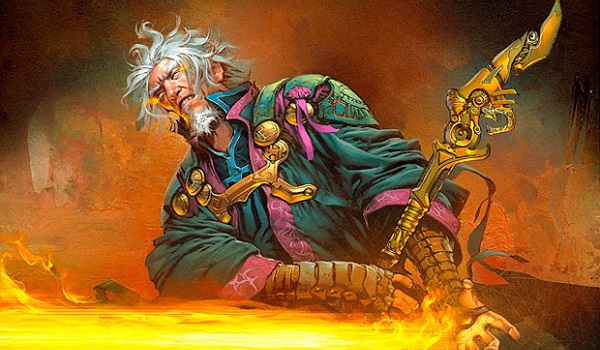
Why Urza?
Compared to other Modern decks, the Urza family of decks isn't very impressive on paper. They're primarily made up of cheap, do-nothing artifacts which can draw cards and make mana, but durdling isn't viable in Modern. The Thopter-Sword combo is better here than in any other shell, but that's not really saying much. Even with Saheeli, Sublime Artificer and Sai, Master Thopterist to make the air useful, it all looks too slow and empty to be a force in Modern.
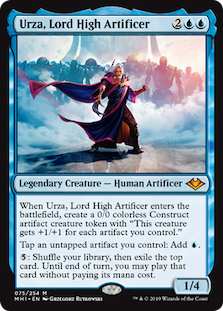 The lynchpin is Urza, Lord High Artificer. Simply put, he features a huge amount of absurdly powerful text, which may be appropriate flavor-wise given his importance to Magic's history and storyline, but does nothing for game balance. Urza generates a threat upon entering the battlefield, makes every artifact into Mox Saphire, and offers a card advantage engine for good measure. It's a chilling thought, but if Urza had Tolarian Academy's ability rather than his current mana ability, he'd be far less powerful, since he could only generate mana once. As-is, his mana generation is on par with that of Krark-Clan Ironworks, and he doesn't need outside help to find more artifacts to keep it all rolling. Urza can just keep flipping random cards off the top. He also goes infinite with Thopter-Sword.
The lynchpin is Urza, Lord High Artificer. Simply put, he features a huge amount of absurdly powerful text, which may be appropriate flavor-wise given his importance to Magic's history and storyline, but does nothing for game balance. Urza generates a threat upon entering the battlefield, makes every artifact into Mox Saphire, and offers a card advantage engine for good measure. It's a chilling thought, but if Urza had Tolarian Academy's ability rather than his current mana ability, he'd be far less powerful, since he could only generate mana once. As-is, his mana generation is on par with that of Krark-Clan Ironworks, and he doesn't need outside help to find more artifacts to keep it all rolling. Urza can just keep flipping random cards off the top. He also goes infinite with Thopter-Sword.
To summarize, the addition of a self-contained engine has supercharged an otherwise mediocre archetype into a very powerful force in Modern. This is made worse by Urza decks lacking genuinely bad matchups. Thanks to tutoring engines and intrinsic lifegain, Urza has the means to overcome most decks given the time. However, since its cards are lackluster on their own, it doesn't have any truly great matchups either. Rather, Urza decks aim to execute their powerful plan and see if the opponent can stop them... which sounds very familiar, and provides a strong clue for fighting the deck.
What to Do
My philosophy is to treat Urza decks like they're Splinter Twin, but worse. Like Twin, Urza presents a turn four-ish win based on a four-mana spell. It has alternative routes to victory that are cheaper, but the main threat of the deck costs four and is sorcery-speed. However, Twin was built to be a tempo deck with a combo kill, and played mostly at instant speed. Urza decks are built like sorcery speed artifact combo decks first, and have non-combo elements secondary, if at all. Thus, it is highly effective to just target Urza, Lord High Artificer and let the deck fall apart on its own. As previously mentioned, that one card is what makes the archetype viable at all. As against Twin, if you can't race, then you must interact.
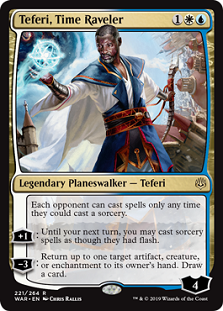 Another tip is to never, ever, get complacent. No matter how thoroughly Urza's hand has been shredded, or how many threats have been countered, so long as a single Urza is left in the deck, you can just lose. On that note, it is imperative to start pressuring Urza as quickly as possible. Sitting back will not win the game. Pure control isn't doing so well because Urza plays counters, Teferi, Time Raveler, and sometimes Veil of Summer out of the sideboard, negating counterspell walls; control lacks the early clock necessary to lay the smack down while Urza is kept off its win conditions.
Another tip is to never, ever, get complacent. No matter how thoroughly Urza's hand has been shredded, or how many threats have been countered, so long as a single Urza is left in the deck, you can just lose. On that note, it is imperative to start pressuring Urza as quickly as possible. Sitting back will not win the game. Pure control isn't doing so well because Urza plays counters, Teferi, Time Raveler, and sometimes Veil of Summer out of the sideboard, negating counterspell walls; control lacks the early clock necessary to lay the smack down while Urza is kept off its win conditions.
The final strategy I'll mention is employing graveyard hate. All Urza decks rely on their graveyards. Exactly why and how shifts from deck to deck, but they all get worse when denied that resource. Lasting hate like Leyline of the Void, Rest in Peace, and Scavenging Ooze are better than one shots like Tormod's Crypt and Surgical Extraction, since Urza players are aware of the their weakness and have adapted their play to mitigate one-shot effects.
What to Avoid
My emphasis on targeting Urza may make it seem like Surgical Extraction is a good plan against Urza. But I don't think it is. Every deck has Mox Opal, and most now have Mox Amber, too. In other words, Urza drops the same turn or sooner than the fastest proactive extraction effect, Lost Legacy, frequently rendering that sort of card moot. If Urza comes out slowly, it is unlikely savvy opponents will have lost in the first place. Thoughtseize into Surgical is fast enough, but is not consistent. Killing Urza then Extracting is viable, but runs the risk of Urza generating value first. I won't begrudge using Surgical if there's nothing better available, but it will leave players wanting as a primary plan.
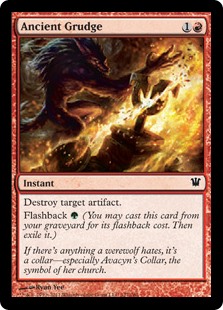 In terms of hate, artifact destruction is similarly mediocre against Urza decks. The only worthwhile targets are prison pieces and Thopter Foundry, each a dwindling part of the strategy. Abrade and company are still valuable in that respect, but should be regarded as speed bumps rather than an actual solution. In that vein, Stony Silence and Collector Ouphe are decent, but not exceptional; shutting down the Thopter-Sword combo is good, and turning off Engineered Explosives negates their main interaction, but most of the artifacts are just setting up the non-artifact spells. Urza cares about the quantity, not the utility, of its artifacts. Going deep in attacking artifacts is a good way to die with a hand full of dead cards.
In terms of hate, artifact destruction is similarly mediocre against Urza decks. The only worthwhile targets are prison pieces and Thopter Foundry, each a dwindling part of the strategy. Abrade and company are still valuable in that respect, but should be regarded as speed bumps rather than an actual solution. In that vein, Stony Silence and Collector Ouphe are decent, but not exceptional; shutting down the Thopter-Sword combo is good, and turning off Engineered Explosives negates their main interaction, but most of the artifacts are just setting up the non-artifact spells. Urza cares about the quantity, not the utility, of its artifacts. Going deep in attacking artifacts is a good way to die with a hand full of dead cards.
Prison cards, particularly Chalice of the Void, are extremely volatile. Certain hate proves very effective against some versions and utterly dead versus others. I regard Chalice as a high-risk, high-reward card against Urza. Blood Moon is an odd case. Urza decks play a lot of basics and Arcum's Astrolabe, which in theory moots Moon. However, every deck is very dependent on fetchlands to make it all work. They need many colors but primarily play Island and thus need to aggressively fetch to hit their color requirements. As a result an accelerated Blood Moon can be lethal where an on curve one is wasted mana.
Classic Whirza
At the start of the year, pure Whir Prison was the talk of the town. As time wore on, it fell from favor; players learned how to fight back, and the deck's inherent weaknesses became prominent. The additions of Goblin Engineer and Urza, Lord High Artificer reinvigorated the deck.
Urza Thopter-Sword, Sean Belisle (1st Place, Modern PTQ GP Atlanta)
No longer restricted to pure prison, Whirza is a hybrid prison/toolbox/combo deck with a beatdown backup plan courtesy of the construct token. Additional tutoring means the prison package can be streamlined in favor of more ways to actually win the game and space for extra disruption post-board.
Strengths
Whirza's greatest strength is its flexibility. It has the ability to assume any role in any matchup, and to quickly switch gears thanks to the numerous interlocking plans in its maindeck. There's also the fact that sometimes Ensnaring Bridge just wins games. Goblin Engineer is not only a tutor, but it can act as a card-draw engine with Mishra's Bauble and a mana accelerant. It's also relatively easy to assemble Thopter-Sword on turn three thanks to Engineer.
Weaknesses
Whirza is particularly vulnerable to graveyard hate thanks to Goblin Engineer. Having additional tutors is a solid Game 1 plan, but Game 2, Engineer is unlikely to pan out; opponents will specifically target the graveyard, which doubly hurts, as Whirza depends on its tutors more than other versions. Hate also neuters the Thopter-Sword combo, which Whirza is especially invested in. Thopter Foundry isn't entirely dead without a graveyard, but 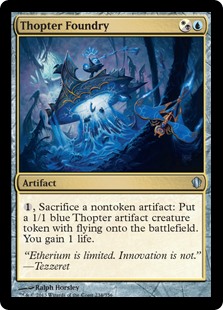 it's very hard to keep enough artifacts flowing to turn them into a win, especially in the face of pressure. Relying on Foundry also means that Whirza can't run Engineered Explosives, increasing its vulnerability to creature decks and hate cards.
it's very hard to keep enough artifacts flowing to turn them into a win, especially in the face of pressure. Relying on Foundry also means that Whirza can't run Engineered Explosives, increasing its vulnerability to creature decks and hate cards.
This build also runs the risk of clunking out. Part of that is the higher land count, but it's mostly a trade-off of the deck. Being a toolbox deck means having an answer for anything. That doesn't mean the tools are useful for everything. Silver bullets are narrow by nature, and drawing one means not drawing a more generally useful card.
Whirza plays more tutors than the other versions so it can fix its frequently awkward draws. A frequent problem for Whirza is needing to find both a combo piece and a way to survive the turn cycle while only having one tutor. I've seen lots of Whirza players fight mightily to not die, only to subsequently durdle to the grave in lieu of Lord High Artificer.
Urza Ascendancy
The next deck to make waves was the pure combo version. When Emry, Lurker of the Loch was printed, players quickly realized that she went infinite looping legendary Moxen with Jeskai Ascendancy in play: every Mox cast via Emry triggers Ascendancy, then replaces the current version, which in turn can be recast an arbitrary number of times. Players then win by attacking with a huge Emry or with a combo of their choice.
Urza Ascendancy, Robert Hayes (Top 8, SCG Regionals Columbus)
It's the dream that so many have had since Jeskai Ascendancy first became a thing in Modern. The best part is that Chalice doesn't stop anything. Ascendancy doesn't care if spells resolve, just that they're cast.
Strengths
I don't think this deck has special strengths or better matchups than the other versions. Instead it has busted hands. Turn one Emry followed by turn two Ascendancy is a seriously fast kill, and more reliable than Neobrand thanks to the Moxen. Ascendancy is a more pure combo deck than the other versions, and is thus far less vulnerable to being disrupted or raced.
Weaknesses
As a combo deck, Urza Ascendency is more vulnerable to anti-Storm hate and taxing, as well as crumbling when the plan doesn't combo together. Jeskai Ascendancy, Mirrodin Besieged, and Urza, Lord High Artificer can't be tutored for or brought back if Emry mills them. Witching Well goes a long way, but can be excruciatingly slow, which erodes any advantage it had over more reliable versions in the first place. Having to run all the non-artifacts also increases the likelihood of too many payoffs, too few enablers. As expensive payoffs, those cards also contribute to clunky hands.
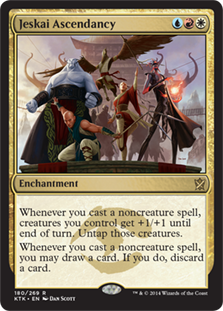 This problem is exacerbated by how finicky the combo is. The pieces must be assembled in the right order, and if one is out of place, there is no combo. Without exactly Emry on the field, Jeskai Ascendancy doesn't combo off (though it can potentially generate a lot of value). Without Mirrodin Besieged, there is no instant win. It is possible to make the pieces decent on their own, but if Emry gets Bolted before Ascendancy lands, the combo fails.
This problem is exacerbated by how finicky the combo is. The pieces must be assembled in the right order, and if one is out of place, there is no combo. Without exactly Emry on the field, Jeskai Ascendancy doesn't combo off (though it can potentially generate a lot of value). Without Mirrodin Besieged, there is no instant win. It is possible to make the pieces decent on their own, but if Emry gets Bolted before Ascendancy lands, the combo fails.
When the combo kill doesn't come together, Urza Ascendancy is kind of stuck. It has the means to generate a massive board with Sai and Saheeli like the other versions, but Ascendancy plays fewer copies of those threats, making it harder to pull off. The enchantment itself can make huge creatures, but won't generate mana without Urza around. It's also hard to cast the card early without a fast Emry to turn on Amber. And there's no room for Thopter-Sword. The problems of actually pulling off the included combo appear to have turned players off this pure combo version, and it has dropped off recently.
Paradoxical Urza
The Paradoxical Outcome version of Urza looks and plays startlingly similarly to Vintage Outcome. I began noticing this deck after Ascendancy starting making waves, and at the time, it was billed as a more reliable version of that deck.
Paradoxical Urza, Luis Scott-Vargas (Test Deck)
Strengths
Unlike Ascendancy, Outcome doesn't need to draw the right spells in the right order, have anything in particular on the battlefield, or do any special setup at all. All that needs to happen is for the board to be full of artifacts when Paradoxical Outcome resolves. From there, it's just a matter of getting enough mana out to resolve Urza and/or a win condition. There's no real need to actually combo off: just drawing lots of cards is enough. Therefore, it's far simpler to pilot.
This decks is also less vulnerable to graveyard hate than the other versions.
Weaknesses
This deck has a lot of four-mana spells that it must resolve to do anything special. It doesn't have room for any maindeck protection for those spells. Thus, it is more vulnerable to disruption than other versions. Outcome has also given up on Thopter-Sword to make room; like Ascendancy, its backup plan is subsequently unimpressive.
Oko Urza
The final and newest version is still a bit of a mystery in Modern. With only one event's data to work with, I don't know how it fits into the wider picture of the metagame or the Urza family. It feels very weird both to play against and to pilot.
Oko Urza, Jeremy Bertarioni (3rd Place, SCG Atlanta)
Oko Urza doesn't try to be anything other than an artifact deck, and endeavors to make the artifacts as good as they can be. It plays more mainboard protection than other versions, and fewer artifacts. To make up for this change, it generates a constant stream of food with Oko and Gilded Goose, hoping to bury the opponent under life and Elks. Thopter-Sword is still present, but fairly incidental. The deck feels more midrange than anything else, but without most of the hallmarks of classic midrange.
Strengths
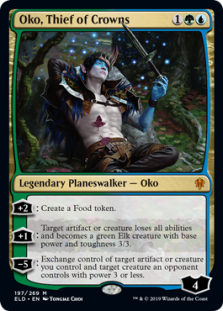 At time of writing, the greatest strength is that this deck is new. Players aren't experienced enough to understand how to attack Oko Urza, boosting its win rate. Additionally, it attacks from a weird angle and doesn't feel like a typical Modern deck. Oko is also a significantly undercosted planeswalker and easily takes over games. Leaving Urza himself aside, the unique part of the deck is Oko generating a constant stream of food and/or elk, which are individually unimpressive in Modern. However, the utility of each activation snowballs and a tipping point is reached where the game just slips away. It's Standard style gameplay that's viable in Modern for the first time and hard to fight if you're not ready for it.
At time of writing, the greatest strength is that this deck is new. Players aren't experienced enough to understand how to attack Oko Urza, boosting its win rate. Additionally, it attacks from a weird angle and doesn't feel like a typical Modern deck. Oko is also a significantly undercosted planeswalker and easily takes over games. Leaving Urza himself aside, the unique part of the deck is Oko generating a constant stream of food and/or elk, which are individually unimpressive in Modern. However, the utility of each activation snowballs and a tipping point is reached where the game just slips away. It's Standard style gameplay that's viable in Modern for the first time and hard to fight if you're not ready for it.
Weaknesses
In a flip of the script, I'm not sure this deck does anything without Oko, to the point I'd target him over Urza. There's even less utility for the enabler artifacts than a typical Urza deck without Oko around. Urza has far more artifacts to work with, but without Oko around to turn that into an army, the Artificer is stuck generating purposeless value. A single Foundry as additional token generation leaves no wiggle room should something go wrong. Despite feeling like a midrange deck, Oko Urza is soft to disruption like a combo deck.
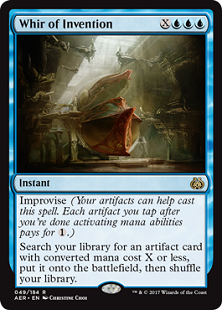 Where Goes Modern?
Where Goes Modern?
Unless Urza eats a ban, which is unlikely anytime soon given the recent spate of bannings and the relatively few Modern events for the next few months, the Urza archetype is here to stay. What form it will actually take is unclear. The combo versions have more weaknesses than the other versions. However, it isn't clear whether Oko or Whirza is the way forward. There may even be other versions to come. I think that Whirza's flexibility is a greater asset than Oko's value, but I wouldn't count out a forthcoming hybrid version that melds the best of both worlds.




